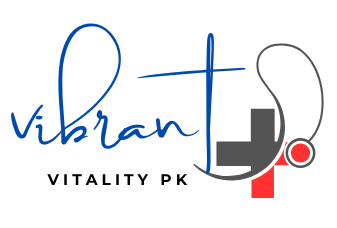Bond Beyond Bottles: The Symphony of Breastfeeding and 5 Best Positions for Baby’s Nurturing
Breastfeeding

INTRODUCTION
Breastfeeding is considered as an integral part of public health policy. Breastfeeding has multifaceted benefits for not only child but also for the mother. Exclusive breastfeeding of infants for a period of first 6 months is recommended by Dietary Guideline for Americans and American Academy of Pediatrics. AAP further suggested introducing complimentary diet at age of 1 year or 2 years or longer if necessary. Breastfeeding as the basic nutritional diet for infants is considered as the pivotal element for child growth and development. The whole world supports this narrative and observes the World Breastfeeding week every year from 1-7 August.
WHAT INSIGHT WE HAVE ON BREASTFEEDING?
In 2019, it’s reported that 83.2% children are receiving breast milk, 78.6% are breastfeed for 1 month, till 6 months the percentage decline to 55.8%. It is also revealed that less than 47% newly born babies have a direct contact and instant feeding called Kangaroo Approach. However, the exclusive breastfeeding is main concern which is as low as 24.9% only. The data shows a minimal concern about exclusive breastfeeding however some breastfeeding also prove beneficial. The decline in will to breastfeed a child requires true awareness and support in order to achieve adequate nutritional goal for a child.

WHAT IS BREASTFEEDING?
Breastfeeding is feeding your child breast milk directly from your breast. It is called as nursing a child. Well. Breastfeeding is no doubt is personal concern of the parents yet the opinions and support from friends and family are makes a difference.
Around the globe lot of medical experts are in favor of breastfeeding exclusively for 6 months. American Academy of Pediatrics and American College of Obstetricians and Gynecologists also recommend breast milk over formula milk, juices and even water. Along with emphasis on exclusive breastfeeding for first 6 months it is also suggested to continue breastfeeding for 2 years along with complimentary diets.
The child could be breastfeed depending upon the need of child. The frequency of breastfeeding also relies on child preference regarding small, frequent of long feeding. It is observed that newly born child need breastfeed after every 2-3 hours. At age of 2 months, feeding span extended to 3-4 hours and at 6 months mostly child want breastfeeding after 4-5 hours.
HOW I CAME TO KNOW THAT MY BABY IS HUNGRY?
Well, the most common sign of baby hunger is cry. Babies use to cry in case of hunger but there are some other signs as well which are as follows:
- The child use to lick their lips or stick their tongue out
- The rooting. Means child try to find your breast by moving jaws, head or mouth.
- Child use to put hand into their mouth.
- Open mouth
- Fussiness
WHAT ARE THE BENEFITS OF BREASTFEEDING FOR CHILD?
The foremost benefit is the essential nutrition required for the child came from breast milk. It has vitamins, proteins and fats which are vital for child growth. Breast milk is also easier to digest by the child. It is revealed through practice and research as well that the babies who are breastfeed exclusively for 6 months may become stronger to fight against viruses and bacteria. Furthermore, the antibodies present in breast milk provide exclusive protection to child and save child from asthma, allergies, ear infections, respiratory diseases, celiac disease, bacterial meningitis, pneumonia, eczema, whooping cough and diarrhea.
Breastfeeding is mostly associated with higher IQ levels in studies. The kangaroo approach, skin to skin contact, physical closeness and eye contact make the bond even stronger between mother and child. It is revealed through studies that breastfed babies gain right amount of weight rather being overweight or underweight in later stages of their lives.
The American Association of Pediatrics also posited those breastfed children are capable to prevent Sudden Infant Death Syndrome (SIDS). The available body of research suggests that breastfed children are under lower risk to develop diabetes, obesity and cancer but research gap still needs to be filled.
WHAT ARE BREASTFEEDING BENEFITS FOR LACTATING MOTHER?
The breastfeeding is not only beneficial for the child but also have certain benefits for the lactating mothers. Breastfeeding burns excess calories which facilitate in weights loss after pregnancy faster. The release of oxytocin hormone, uterus return back to pre pregnancy size and helps in reduction of uterine bleeding after birth. Breastfeeding also lower down the risks of ovarian cancer, breast cancer and osteoporosis. Most importantly, in absence of formula milk or nipples and their sterilization mother can spare ample time to spend with child that ultimately enhance bonding between mother and child.
IS BREAST Milk SUFFICIENT FOR BABY?
Yes, it more than sufficient for child if breastfed for 6 months exclusively and continued to 2 years of age along with complimentary food. Mother mammary glands excrete a special type of milk after birth which is called as Colostrum. It’s a thick, yellow and in small quantity but full of nutrition required for a newly born baby. Colostrum makes the digestive system of child ready to digest breast milk easily.
WILL YOU MAKE ENOUGH MILK TO BREASTFEED?
The first few days after birth, your breasts make ideal “first milk.” It’s called Colostrum. Colostrum is thick, yellowish, and there’s not a lot of it, but there’s plenty to meet your baby’s nutritional needs. Colostrum is considered as first phase milk which provide antibodies and essential nutrients to child, second phase milk is called as transitional milk and finally last phase is mature milk.
The mother mammary glands excrete Colostrum first then transitional milk for few days and after 10-15 days mature milk continue to be fed to child. Small amount of weight loss among babies is not associated to breast milk. Excessive breastfeeding make more breast milk. Formula milk tactics may reduce breast milk. If mother can’t breastfed child exclusively than must make a routine to breastfed child for short time in order to keep making breast milk.
HOW COULD I KNOW WHETHER BABY GETTING ENOUGH MILK?
Most of breastfeeding mothers are concerned whether the child is feeding appropriately or breast milk is sufficient for baby or not. In order to address such concerns mothers must keep an eye on the following changes:
- Babies should not lose more than 7 percent of birth weight in several days after delivery
- Observe contention between 1-3 hours after feeding
- When a bay is about 10 days old he will at least wet 6 diapers with pale or clear pee
WHAT ARE RECOMMENDED POSITIONS FOR BREASTFEEDING?
Well, the best positions for breastfeeding a child are those in which mother and child both feel relax and comfortable. However, there are some positions which are recommended for better breastfeeding a child.
Cradling
Rest the side of your child’s head in the mid of your elbow with their entire body in front of you. Position your child’s tummy against your body so they feel completely upheld. Place other arm beneath child and cover baby lower back.
Football Positioning
Line your child’s back along your lower arm to hold your child like a football, supporting the head and neck in your palm. This works best with infants and little children. It’s likewise a decent position on the off chance that you’re recuperating from a cesarean birth and have to shield your midsection from the strain or weight of your child.
Side-lying
This position is perfect for night feedings in bed. Use pillow under your head to settle in. Then cuddle near your child and utilize your free hand to lift your breast and nipple into your child’s mouth. When your child is accurately “hooked on,” support the head and neck with your free hand so there’s no winding or stressing to continue to nurture.
Cross-cradling
Sit straight in an agreeable seat that has armrests. Hold your child in the mid of your arm that is inverse the breasts you will use to take care of them. Support their head with your hand. Bring your child across your body so your bellies face one another. Utilize your other hand to cup your breasts in a U-shape hold. Carry your child’s mouth to your breast and support them close, and don’t incline forward.
Laid backwards
This position, likewise called biological nurturing, is a great deal like it sounds. It’s intended to take advantage of the regular breastfeeding senses you and your child have. Recline, yet not flat, on a sofa or bed. Hold your child so your whole fronts contact. Allow your child to take any position they’re agreeable in the same length as their cheek rests close to your breast. Assist your child with latching on if needed.
ABCs of BREASTFEEDING
The ABCs about of breastfeeding facilitate mothers to remain calm and comfortable throughout the process of breastfeeding a child
A-Awareness
Mother should be aware about child signs and symptoms of hunger so that a child could be breastfed instantly in case of hunger. It is known as on demand feeding. In initial few weeks mothers have to feed 8-12 times a day. By keeping a track on infants body, head, neck, moth and tongue moments mother can estimate about hunger of child. Cry is a sign of acute hunger of child.
B-Be Patient
Mothers need to be patient at times because infants use to spend 10-20 minutes to breastfed adequately. Don’t hurry your child in feeding, be relax and patient.
C-Comfort
Mother’s comfort is key element of breastfeeding. Mothers use to employ nice and comfortable positions by using pillows and footrests to support head, neck, arms and legs.
WHAT ARE MEDICAL CONTRADICTIONS WITH BREASTFEEDING?
Although breastfeeding is healthy for babies yet there are some conditions where it could become harmful as well like:
- If mother is HIV patient
- If mother has untreated and active Tuberculosis
- If mother has cancer and chemotherapy is undergoing
- If mother is addicted to cocaine or marijuana
- If baby has rare medical condition of galactosemia.
- If mother is under treatment and taking medicines for migraines, headache, Parkinson disease or certain variations of arthritis.
CONCLUSIONS
Breastfeeding is the organic standard for taking care of newborn children and has many advantages for the two moms and infants. Breast milk is a nutritious and balanced food that gives every one of the supplements that children need for their development and improvement. It additionally contains antibodies that assist with shielding children from diseases. Breastfeeding can likewise assist moms with getting thinner after labor and decrease their gamble of fostering specific constant sicknesses.
The World Health Organization (WHO) suggests that children be exclusively breastfed for the initial a half year of life, trailed by kept breastfeeding alongside complimentary food sources until 2 years old or past. Be that as it may, not all moms can breastfeed for the suggested span. There are many elements that can influence a mother’s capacity to breastfeed, for example, her plan for getting work done, her accomplice’s help, and her own wellbeing.
In spite of these difficulties, it is critical to recollect that breastfeeding is a characteristic cycle and that most moms can figure out how to breastfeed with the right help. There are numerous assets accessible to assist moms with breastfeeding, including lactation experts, breastfeeding support gatherings, and online assets.
On the off chance that you are a mother who is thinking about breastfeeding, I urge you to converse with your primary care physician or a lactation specialist. They can assist you with evaluating what is happening and furnish you with the help you want to breastfeed your child.
WHAT IS BREASTFEEDING?
Breastfeeding is feeding your child breast milk directly from your breast. It is called as nursing a child.
HOW I CAME TO KNOW THAT MY BABY IS HUNGRY?
Through baby’s head, tongue, neck movements. Babies use to suck hands and fingers or make facial expressions and ultimately cry.
WHAT ARE THE BENEFITS OF BREASTFEEDING FOR CHILD?
The child will get essential nutrients and antibodies from breast milk. Breast milk saves a child from several diseases like diarrhea, eczema, pneumonia etc
WHAT ARE BREASTFEEDING BENEFITS FOR LACTATING MOTHER?
It saves mother various diseases like ovarian cancers, breast cancers, helps in weight loss after pregnancy etc
WHAT IS COLOSTRUM?
Colostrum is the first milk after baby birth, its yellowish and in small quantity. It contains antibodies to save child from bacteria and viruses.







Great initiative..